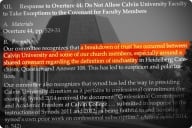You have /5 articles left.
Sign up for a free account or log in.

Some colleges are navigating long waitlists for housing as the fall semester nears.
iStock / Getty Images Plus
Students are scrambling to find housing as the fall semester rapidly approaches, with many colleges managing lengthy waitlists and frustrations from would-be residents desperate for a bed on campus. At some institutions, housing waitlists are a positive sign for both booming enrollment and student preferences.
But even as they deal with such welcome developments, institutions still have to figure out where to place students for the coming academic year. While some universities are turning to familiar strategies–such as placing students in nearby hotels–others are deploying new tools to incentivize students, and even alumni, to help ease high housing demands.
Student Housing Demand
The housing waitlist at the University of Utah was recently as high as 3,500 students. Now that number has fallen to under 300, according to Sean Grube, executive director of housing and residential education at the Salt Lake City campus. Despite increased enrollment, Grube said, the university has made “dramatic improvement” in shrinking its wait list—and has even enlisted local alumni to house students in their homes.
“We've had a surge in enrollment demand over the past two years, students are really excited about attending [the University of Utah] and that has created increased interest in housing,” Grube said.
Utah is not alone in facing a housing squeeze as a result of enrollment growth. In Ohio, the University of Cincinnati is navigating a similar scenario.
“First and foremost, we are growing our freshman class pretty aggressively,” said Jack Miner, vice provost for enrollment management at the University of Cincinnati. That means more demand for a limited number of beds.
But that’s only part of the problem, Miner explained. Cincinnati has also seen an “unprecedented interest in housing” from local students who normally commute to campus. “I'm hearing firsthand from students that they have experienced so much of high school as being online, that they absolutely want to have that full student life experience,” Miner said.
The coronavirus pandemic emptied many K-12 schools across the U.S., forcing high school students into remote classes and disrupting extracurricular activities. Now many college students are looking to make up for those lost experiences by embracing campus life.
And it isn’t just incoming first-year students who have been affected; some observers note that housing demand is up even among upperclassmen, who also had their first two years of college constricted by the pandemic when many universities emptied their dorms and went remote.
“Students want the opportunity to live on campus and ingrain themselves in campus life," Grube said. "The proximity to other students, and the experience, I think that’s the primary driver [of demand]."
Then, of course, there’s runaway inflation, which stands at 9.1 percent according to the U.S. Bureau of Labor Statistics. Housing prices, like many goods and services, have increased dramatically. Residential halls can often—though not always—be a more affordable alternative, with many colleges offering housing facilities that fall below the market rate for private rentals.
A communications official at Florida Atlantic University, which is also seeing increased enrollment and demand for housing, cited cost as one of the reasons students want to live on campus.
“Increasing freshman enrollment coupled with the lack of affordable local housing as well as limited local housing inventory has created unprecedented demand for on campus housing space,” Joshua Glanzer, spokesperson for FAU, wrote by email. “Many universities, in Florida and across the country, are faced with similar situations. In anticipation of a surplus of demand, we ended the application on May 1, leaving us with a waitlist of more than 800 students.”
Private student housing providers also point to increased demand. Applications and lease volume are both up over last year in nearly all markets for Cardinal Group, a real estate management firm with numerous student housing properties, according to Jenn Cassidy, senior vice president of student housing operations. Pre-leasing for fall 2022 is up by roughly seven percent compared to last year, she added.
Another part of the challenge for colleges is that fewer off-campus beds have been added during the pandemic, putting additional pressure on colleges to find spaces for students. Cassidy noted via email that since student housing is a hot market, providers will likely invest in greater capacity to meet rising demand going forward.
“Cardinal believes the outlook for future student housing is very positive. With high occupancies across portfolios this year, owners will focus on rent growth and strategic investments back into real estate,” Cassidy said. “For the past 2 years, during the pandemic, the number of new beds delivered across the country has been significantly less than years prior. It is anticipated that the new supply for Fall 2023 will grow, and trends will begin to move back toward pre-pandemic.”
Student Housing Solutions
Some colleges are finding beds for students by turning to local hotels. Florida Atlantic University, for example, has signed contracts with two hotels within two miles of campus that will provide 180 beds, taking care of most of the 195 students who were on FAU’s waiting list as of last week. To help students feel connected, FAU will host special events at the hotels and provide a shuttle that runs between them and campus.
Other colleges are taking a different approach. The University of Utah is offering local alumni $5,000 per semester to board students. The university is aiming to place 100 students with local alumni but could expand that to 1,000 placements next fall if the pilot program is successful.
Utah will also house students in its on-campus hotel and conference center, and recently leased a property three miles from campus, which will include shuttle service for students living there.
To make room for incoming students, the University of Cincinnati has been encouraging returning students to move out of on-campus housing to adjacent neighborboods in properties managed by the university. Part of the pitch to get returning students to move is that nearby housing is less expensive than at the campus core. Then there’s the offer of a $2,500 financial incentive and a free parking pass for students willing to move into the private housing market for the fall semester and free up space in campus housing.
“We're incentivizing those students to give up their housing contracts and either live in private housing, or in the case of students that grew up in Cincinnati to be a commuter student, rather than an on-campus student.”
Some colleges squeezed for student housing also have long-term plans to build out more dorms. But in the meantime some colleges will continue to make do with temporary solutions like leasing hotel space; others will turn to unique incentive programs for students and alumni or look to public-private partnerships–such as a 35-year, $200 million agreement at Eastern Michigan University–to fix student housing woes.








